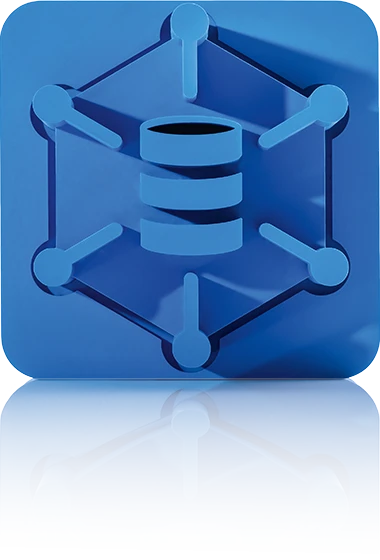Product Database
The Flexible Product Data Model for Features, Relationships and Views

Function Overview
Flexible data model
The crossbase database offers great flexibility. The administrator can freely define all settings. New requirements can be implemented immediately by configuring the product data model. Mandatory fields can be defined and inheritance options used to optimize data maintenance.
Simple data transfer
Mechanical and electrical engineering
With the crossbase solution, planners can integrate CAD and configuration into their product communication. This can be the provision of multilingual marketing information for CAD and configuration or the enrichment with product categories, product features, textual descriptions, PDF files and product photos. Integration into the online catalog is also possible, e.g. by providing photorealistic CAD graphics, characteristic curves of designed products and the display and provision of 2D and 3D CAD files for all common CAD systems.
Building Information Modeling (BIM)
Configurator
The information for a configurator can be managed in the crossbase database. Various information is maintained for this purpose.
Together with the partner Plan Software (now part of the holding company 4PACE GmbH), a configuration interface from crossbase to 3PQ® CONFIGURATION was implemented. For this purpose, the selection options on the configuration interface are managed in crossbase: Drop Down, List, Slider, etc. The advantage is that no marketing-related information, which is already available in crossbase, has to be maintained in the configurator. The rules for the configuration options are then maintained in the configurator and the output on the web interface is defined.
Product features
Product features can be used to describe products in a structured way, e.g. to enable a dynamic filter search in the online store or to automatically generate product tables in the printed catalog. Product attributes can be classified for an optimal overview during maintenance.
An attribute can be defined numerically or alphanumerically, with a unit of measure, language-dependent or language-neutral. A textual description or an image can be stored for each attribute or value, which can be displayed in a media-specific manner, e.g. in tables. In addition, numbers can be formatted country-specifically, values can be converted using formulas or combined in texts.
Product views
Products are displayed in the company in different views, e.g. in the ERP system in a controlling view, in the design department in a functional view, in marketing in views for online and print and for trading partners in various classification views such as ECLASS, ETIM or UNSPSC.
With crossbase, you have all views integrated in a single database. It is also possible to manage these differentiated product views as independent classifications and reference the products within them. This means that they only need to be created and maintained once, but can be linked multiple times. The original creation of the products takes place in a unique product structure, which is usually derived from an existing product hierarchy.
Product relationships
Spare parts, parts lists, accessories, sets, product recommendations and follow-up articles are typical product relationships. Although some of these are maintained in the ERP or PDM system, they are usually incomplete. In crossbase, relationship types can be defined and the relationships between the products can be maintained. Data maintenance is article-oriented (n articles to 1 article) or as mass maintenance (n articles to m articles) and is therefore much easier than in the ERP system.
In addition, reference attributes can be maintained in the context of a relationship. In the context of a spare parts list, for example, the item number and the quantity can be assigned. For an accessory part, you can specify whether it is required or optional.
I look forward to a personal consultation with you.
Call now +49 7031 9881-770
or send me a message
Herby Tessadri
Sales Manager and Authorized Signatory

